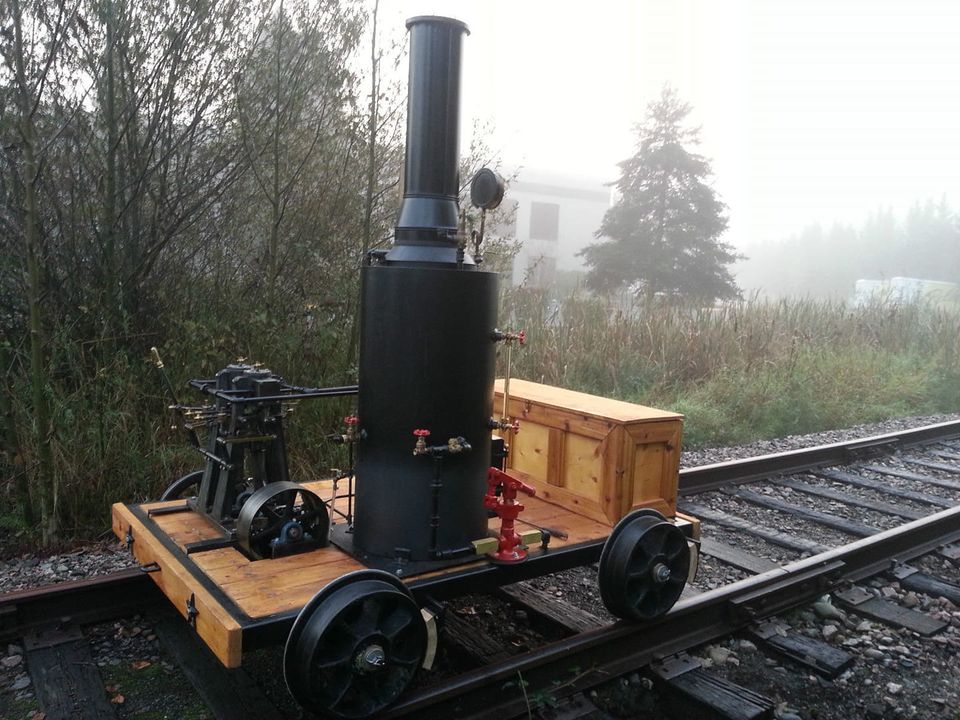

It's a very complex system, but it enables a continuos operation of the robot 24h a day and 7 days a week. A microcontroller observes the charging procedure to avoid damage of the batteries during operation. If the connection to the metal stripes is reestablished, the robot is powered through the current rail system and the batteries get recharged. Whenever the connection to the external power supply is interrupted, the robot is fed with electricity through the batteries, discharging these buffers. Large capacitors or batteries can be used to buffer electric energy. In short, the issue is that when the powered rail is placed, it does not check to see if the block it is on is already powered, but keeps its state until a nearby block updates, such as might happen when you place a redstone torch that would power it. A computer attached to this system will crash. This is a glitch relating to the updating of blocks. In practice there is no steady contact, because the surfaces of the metal stripes and the sliding contacts are not ideally plain and clean. A fixed voltage regulator is needed to power the computer correctly. That makes the arrangement work properly even with a poorer engineering tolerance of the base plate.Īccross the diodes and metal stripes there is a noticeable voltage drop of 1.83V, thus the voltage applied to the rails at base plate must be higher than the input voltage needed at the rover electronics. When using more than 5 sliding contacts, the gap between the metal stripes at the base plate can be enlarged. Less visible, but more complex to manufacture are multiple contact points that are joined at the reverse side of the base plate. One to slow the cart and one to fully stop it in a 1-block down position, so when i hit a button. In java version, every 10 or so blocks on flat surfaces, every 2 blocks in climbing slopes.


Instead of massive metal stripes, you can also use two thin cables with a distance equal to the width of the metal stripes. As for uphill, just experiments with how few you need and how much you're willing to spend, I do around 1 every 3 but it varies. The outer diameter of the circle, the sliding contacts are arranged on, must be large enough so that three metal stripes can be touched at once. The width of the metal stripes must be larger than the gap between two sliding contacts. This will send a redstone signal into the powerd rail. Another method is to put a detector rail in front of a powerd rail. you can use a redstone block next to, or beneath the powered rail, or use a redstone torch next to the rail. The gap between the metal stripes must be slightly larger than the diameter of the sliding contacts or else they will shorten two stripes! Powered rails need to be powered to work. At the drawing, the positive terminal is always located to the left and the negative terminal to the right of the load. With the diodes, the polarity at the input terminals of the electronic board doesn't change during movement. If that arrangement is pulled over the base plate, at least two sliding contacts are connected to two different metal stripes at any time. Rails with ground potential alternate with +8.5V rails.Īt least 5 round sliding contacts arranged on a circle and 10 diodes are needed to power the robot. Six iron ingots and one stick produce 16 rails.The power supply system shown here is made of a wooden base plate with metal stripes and sliding contacts. When making rails, it is important that the iron ingots and the stick are placed in the exact pattern as the image below. The ride’s showstopper is the 750’ long, 156’ high Bass. Riders can enjoy beautiful views of the Des Moines River Valley, where is it is not uncommon to see a convocation of bald eagles along the riverbank. In the third row, there should be 1 iron ingot in the first box and 1 iron ingot in the third box with the second box should be left empty. Rail Explorers have partnered with the Boone & Scenic Valley Railroad to bring the first Rail Explorers Experience to the Midwest. In the second row, there should be 1 iron ingot in the first box, and 1 iron ingot in the third box. In this first row, there should be 1 iron ingot in the first box and 1 iron ingot in the third box the second box should be left empty. Versal ACAPs contain a number of power rails that each serve a specific function, as shown in the following tables. Once you open your crafting table you will have the 3x3 crafting grid similar to the picture below: Open your crafting table to begin crafting the ender chest with the obtained ingredients contained in your inventory. Here is the step-by-step pictorial guide you need to follow to make Rails in Minecraft:


 0 kommentar(er)
0 kommentar(er)
